June 21, 2024
Drove up to San Francisco to help at a political rally and ended up with unexpected side trips to see inside City Hall, an exhibit of ancient Chinese artifacts and four 240+ year old Spanish cannons as my mind wandered connecting dots of all these disparate things rimming the Pacific Ocean to try to make sense of current events.
First up, the “Phoenix Kingdoms” exhibit of 2,500 year old artifacts from five mainland Chinese museums as well as at least one surprising item from the Asian Art Museum of San Francisco hosting the exhibit. Walked past the guardian lion-dog statues by the front doors. Always these are one male, one female. One with a head up, open mouth and a paw on a ball, the other with a closed mouth and head down. Unlike the guardians lions at the Chicago Art Institute (North/Prowl & South/Defiance with their own X account) and the New York Public Library (North/Fortitude and South/Patience) the San Francisco guardians are not yet named. That is not normally done for such sacred mythological/religious animals. Given their poses I’d call then Wannaplay and My-Ball. Or more serious names in Chinese.
The Asian Art Museum used to be San Francisco’s main library. Founded by Andrew Carnegie with an immense cash gift and a matching gift to build smaller libraries all over town. A total of $750K ($27.7M in 2024 dollars) to San Francisco Mayor James “Keep California White” Phelan, later a US Senator 1915 to 1921. The US Congress tried to break up Carnegie’s US Steel Trust in 1911 as well as Standard Oil but both efforts were mostly mere white washing political virtue-signaling. That Carnegie gift reeks of a payola to San Francisco’s then current and future US Senators.
I’d not been inside this museum since the lockdowns. Last time I was there its restaurant had a large selection with seasonal menus. Now it has a limited takeout menu from a local chain selling Asian street food. The entire place was virtually empty of visitors. A strong whiff of economic hard times and mismanagement. $27 entry tickets for all seniors for museum entrance plus a special exhibit fee?!
As a prelude to the heavily advertised Chinese exhibit I walked into a room of new art purchased by the museum. A modern Chinese-style set of ink paintings caught my eye. A Hong Kong university l’d visited in 1994 tucked on one of the steep and jungly slopes of Victoria Island. I’d come to visit friends and see Hong Kong before the handover when it would cease to be ruled from London. I particularly wanted to pay respects at a POW cemetery in Stanley on the south side of Victoria Island and see a ceremonial firing of a cannon by the harbor. My friends were all USA expats who spoke Chinese and had a delicious sense of humor.
Britain won Hong Kong’s Victoria Island by gunboat “diplomacy” during the Opium Wars. The island was supposed be held by Britain in perpetuity by a signed treaty. As Hong Kong became an amazing economic success and its community wanted more land, Britain negotiated with more gunboats a lease for a term of years from China for Kowloon Territory on the mainland. That lease would soon expire and not be renewed by Beijing. Britain had no military ability anymore to keep Victoria Island or Kowloon. Ironic, it is still hanging on to Gibraltar Island and part of Ireland while China today has ports all around Africa, each one tied up in contracts with killer collateral deals in return for development loans. Default? Give the land title for your new container port or new airport to the Chinese!
The university ink paintings had a light show to depict the smoke and fire used by police to quell a human rights riot in 2019. A central panel lit up with a cloud of small white lights. I’d watched that year on television marchers fill the streets of the Hong Kong business and government center demanding Beijing honor its commitment to preserve the old British legal system and many of its laws for a few more years as agreed in the handover documents. But, such marching was no longer allowed by local police. Walk around in 2019 holding up a blank piece of paper or a Winnie the Pooh stuffie and get arrested. The pandemic lockdowns in 2020 made such marching a lot harder.
I chatted with the room’s guard who was one of only at most a dozen people I saw in the museum, including 2 staffers in the gift shop with 3 customers (me included) who didn’t buy anything. I could’ve shot a cannon through the new art exhibit and not hit anyone. The guard and I agreed only one or two of the new art pieces were things we’d want in our own homes.
The entry to the rooms with the special exhibit of ancient Chinese art and artifacts was obscure. Signage hard to read and visitors had to get through a curtain of thin grey ceiling to floor cordage. Maybe the designers’ idea was to give the feeling of entering an underground tomb because most of the artifacts were found underground. A very oppressive atmosphere.
A drum with long necked phoenix and “beast” supports
Hard to see any fine details in the dim light to protect the artifacts. But I’m glad I saw the exhibit and read every caption. Amazing items, especially the things dug up in my lifetime. One small jade piece from Avery Brundage which he donated long ago to the San Francisco Asian Art Museum. He was an infamous Olympic Games ruler who many think never got over losing an Olympic event to Jim Thorpe whom he persecuted for life.
All the items are from the Warring States Era (481-221 BC) which started to end once the First Emperor of China unified his nation, somewhat temporarily because it partly fell apart after he died in 201 BC. He set in motion the top-down aristocratic, legalistic, and highly bureaucratized national culture which survives to this day. Made me ponder how long the bottom-up democracy of Switzerland has survived and if the nearly 250 year old USA will survive longer than the Chinese culture has done.
[Stone instrument with long necked phoenix supports]
I’ve done work with the music and arts of China while traveling in mainland China. Learned many of its very best and locally cherished artistic things often have well understood layered meanings. Different animals and words from phoenix and deer to a jasmine flower and Winnie the Pooh can have unexpected meanings. Blank pieces of paper, umbrellas, Winnie stuffies and USA flags were held in 2019 by protest marchers in Hong Kong. All were arts and speech from a culture developed out of the brutal Warring States Era and that First Emperor imposing a top down highly bureaucratic rule to end civil wars thus, becoming one of the world’s first surveillance states. A culture which tried, just like the Roman Empire in the British Isles, building stone walls to try to keep out ultimately successful foreign invaders from the north. And, failed to fortify its sea coasts.
[Warring States arrowheads. Not the cloner Caminoan’s arrowheads as seen in Star Wars #3.]
Rare to see much wild creativity in any mainland Chinese arts from my Western eyes and ears. It’s not a country, so far, which would have ever, I think, invented jazz or rock & roll. For sure not heavy metal music nor is anything allowed overtly subversive or sarcastic to the rulers. Instead, I see as in the Hong Kong university ink paintings mostly riffs on thousands of years of old artistic traditions and thus, “safe” formulae with few exceptions. New thoughts are dangerous to autocratic rulers who fear any changes they do not 100% control. OK for Chairman Mao to order during his Cultural Revolution all his people literally to smash the “olds” from art and temples to white haired professors’ faces but only because he, living far away from his people often behind high security walls at an actual imperial villa by a lake right next door to the Forbidden City in Beijing, ordered that cultural destruction.
***
[San Francisco City Hall behind a classic happy dog pose inviting fellow canines to play]
Walked across the City Hall plaza towards a rally protesting CNN’s exclusion of Robert Kennedy from the June 27 first presidential debate despite the Federal Elections Commission decision the CNN rules and how they’ve been applied is essentially arbitrary and capricious, thus illegal. Kennedy has a good legal argument if he is excluded that means CNN is liable for reporting campaign contributions of the cash cost of the air time given to the Republican and Democrat parties’ corporations. That then triggers an FCC administrative review of CNN’s federal broadcast license (47 United States Code Section 315, 52 U.S.C. Sec. 30118, and 11 Code of Federal Regulations Sec. 110.03). Every USA lawyer knows that whole Finger-Pointing and River in Egypt (“Da Nile”) games if pursued would be tied up in administrative processes and civil court litigation not ending until long after the November election.
I walked past three long lines of tall flag poles. Lots of USA flags and Rainbow flags for Pride Month flapping in a stiff wind. A few historic 1776 flags and California State flags. The plaza’s mulberry trees are heavily pruned with each stunted branch ending in a thick bulb. I’ve always loathed those trees. I keep expecting one to punch someone.
Chatted with several of the Kennedy supporters. All were calm, smiling, friendly, and looked very healthy. Most I talked to had avoided all the covid jabs. None blocked any vehicle traffic or pedestrians nor the many large wedding parties going to and from the City Clerk’s office to get married. Lots of cars, especially trucks, tooted their horns in support of the protestors. No press showed up. I didn’t see any City staff or officials come out to talk to the protestors. City Hall has been run by one political party most of my life. Guess who is being censored and shadow banned?
***
Thought of the last time I’d been at such an important Chinese art exhibit in San Francisco. Way back around 1975 right after President Nixon was forced out of office. It was an exhibit at the De Young Museum in Golden Gate Park with some of the very best ancient Chinese things. I asked my Grandmother to take me there. It was packed with people. I was vaguely aware the Chinese by lending the USA those ancient things meant the end for the USA of the Vietnam War and the Cultural Revolution, too. A people proud again of their ancient heritage. No longer so afraid of attack by the USA and its allies.
I’ll never forget in that exhibit the burial costume made of rectangular jade plaques and reading its caption about what jade means to many Chinese people. Grandma bought me the heavy exhibit catalog which I still cherish today, its spine completely failed after studying it so often.
That exhibit was negotiated by Nixon and Chinese leaders as part of their 1972 meeting. Happy and politically safe cultural exchanges of art, pandas, and ping-pong. Nixon got an antique Chinese flying horse statue as I recall and Mao got a Boehm sculpture of a Trumpeter Swan family made in the USA.
With all that good vibes public relations spin it was easy for many to forget the UN kicked Taiwan out of its voting seat right before Nixon flew to China where he signed a document in Shanghai agreeing China’s “claim” to Taiwan was “accepted” by the USA. In about 8 years, President Carter moved the USA’s “China” Embassy from Taiwan to Beijing. A “Look here!, not there!” deal like President Kennedy did to end the Cuban Missile Crisis in 1962 by secretly agreeing to remove USA’s Jupiter nuclear missiles he had secretly based in Turkey capable of hitting Moscow.
The Big Game of “normalizing relations” with secret handshakes.
Let’s recall President Teddy Roosevelt winning the Nobel Peace Prize for negotiating the end of the Russian-Japanese War by a secret deal he made with Japan to carve up the “sick men”of Asia (a.k.a. China and Korea) under a joint spheres of influence agreement giving the USA unfettered control of, for starters, the Philippines and some other islands. Japan then became about ten years later an ally of the USA in WW1 but a military enemy starting on December 7, 1941 in WW2 after the USA had imposed in August 1941 an oil embargo on Japan, oil Japan heavily relied on. The USA’s public rationale for that embargo in summer 1941 despite more than a decade of Japan busily and brutally conquering ever more territory in China was “now” the USA was suddenly concerned durning hot & humid Washington, D.C’s dog days of summer holidays about “old” atrocities like the Japanese Imperial Army’s Rape of Nanking. Not a peep from the USA about Japan’s earlier beyond-brutal conquest of Korea after the “Teddy” deal.
In WW1, China initially gave labor aid to the British and France. After the USA declared war on Germany in 1917 Japan also formally declared war against Germany. After that war ended, the “dotted lines” in the China Sea and over the entire Western Pacific Ocean over which nation controlled which islands became murkier with ever multiplying, inconsistent, and dueling maps. Another big map shuffle happened in the eastern Pacific Rim lands and islands after the WW2 peace talks in San Francisco right across the street from its City Hall. There, Japan and the USA finally signed an “occupation” agreement but only after North Korea with USSR and Chinese support had invaded South Korea. No resolving all the confusing map issues, just making them more complex like ticking time bombs.
***
I’ve been watching in recent years the news of China building a new island with long runways and a deep water port in the middle of some of those dotted lines. Meanwhile, the USA is publicly spending $409M rebuilding right now to reopen the once longest runways in the world on Tinian Island in the Commonwealth of the Mariana Islands. Those vintage 1944 runways were totally abandoned after US military runways were built for the Cold War on nearby Guam and Saipan. Saipan and Tinian, just 5 miles away from each other, are the only U.S.-controlled territories where Chinese visitors need no visa. Wonder why? I smell another secret Teddy style deal.
Saipan is full of Chinese and other tourists while Tinian was mostly going back to nature. [EDIT 6/24/2024: international news Saipan will hold the final US court action on Wikileaks’ Julian Assanage.] The biggest business on Tinian now is for US defense contractors after the big Dynasty casino resort there owned by Hong Kong investors catering to Chinese tourists shut down around 2015 after being ordered to pay a US$75M fine for money laundering issues. Maybe it has reopened? Housing and offices for US military and other employees?
I spent many hours during the 2020-2021 lockdowns looking at public satellite imagery of every inch of Tinian and comparing everything to an old paper USGS topo map used by my Dad. Easy to spot remains of the old sugar cane fields. The old leper colony. Streets built by the USA in WW2 all named for famous Manhattan streets. Japanese Shinto shrines. Some small vegetable farms. Old beef cattle operations. Interesting modern antenna structures all pointed at China reminded me a bit of the Duga radar near Chernobyl designed to spot incoming USA/NATO missiles. A few odd slightly fuzzy places in the imagery. I’m thinking top secret ram jet drones carrying spy sensors, electronic warfare equipment, and bombs.
Fairly good online map labels for the Enola Gay historic sites on Tinian for the first nuclear bombs dropped in anger. A nuclear bomb pit covered in a greenhouse glass roof. The Suicide Cliff where so many civilians jumped to their deaths in 1944 either ordered to do so by Imperial Japanese soldiers and/or believing their rulers’ propaganda the Americans would rape and slaughter them all, babies included. Their Emperor, then safe at his Tokyo imperial palace inside a large green garden kept off USA bombing target lists, had ordered his island subjects to fight to the death, all civilians included.
The north-south red dotted road is Broadway. Parallel major road is Eighth Avenue. Dynasty casino is/was near Taga Beach just SE of the town of San Jose.
Spanish Empire explorers first noticed Tinian in the early 1500s. It occupied, proselytized, and claimed it in 1669. The local population are theorized to have come from Australia and the Philippines numbering about 40,000 people at the European conquest. The Spanish set up big farms to raise vegetables, cattle, and pigs to supply its Manila Galleons in its Mexico-Philippines monopoly trade routes. By 1720, disease and overwork had reduced the Tinian native population to under 1,400 who were all forced to move to Spanish-controlled Guam.
The Spanish government needed Pacific Ocean islands to provide fresh water and food for their very lucrative sailing galleons trade between the Americas and Asia. Their big business was trading Mexican and Peruvian silver coins and bars for Asian silks, lacquerware, china, and spices competing directly with the British and Dutch chartered trade monopoly corporations, all protected by their home countries’ military.
An offshore "Great Game” for profit and political power the Chinese and Japanese declined to play overseas until about 125 years ago for Japan and for China after WW2. Yongle Emperors of the Ming dynasty of China in the early 1400s had sent out across oceans great exploration fleets commanded by castrated eunuchs but found what they officially considered only “barbarians.” The Chinese word for all foreigners, especially the non-Han ethnicities like all Tibetans, is still “barbarians.” Thus, Chinese rulers decided to stay home and allow the world to come pay cash, goods, and political tribute to their “superior” selves ruling from their Celestial Middle Kingdom. An unfortunately bad choice once Europe began its Renaissance and thus, sending sailing ships out to explore the oceans by the later 1400s.
With “First World” industrialization rising by the mid-1800s, China and Japan had to deal with visitors and invaders in new coal and oil fueled fast ships. Add a quickly rising technological and Manifest Destiny-inspired USA and all heck broke loose on Western Pacific islands and nearby mainlands. Japan which took much of its original culture from its big neighbor of China chose to become a hermit kingdom like its neighbor Korea, very, very unfortunate Great Game choices in hindsight when the Euro-American gunboats arrived.
Spain sold Tinian to Germany after it lost the Spanish-American War of 1898. Let’s reread that sentence, shall we? Such wild “plays” in the Great Game using far away people and lands like chess pieces are flabbergasting. Some of those “small” peoples fight back, others cut the best deals possible, some eagerly get in bed with any new culture which looks “better,” while some have leaders who are simply cheap whores open to the richest buyers.
Hey! How about those endless big green irrigated fields for a massive dairy cow operation in a hard desert along an interstate between the Colorado River and Phoenix, Arizona? It all depends on a fossil aquifer being pumped dry to benefit the farm’s owners in Saudi Arabia last I checked. Guess which county supervisors want more property taxes and don’t care one whit about a depleted aquifer nor ancient hillside springs?
The German Kaiser Wilhelm II was super keen by the 1890s to have a world empire to rival that of his maternal grandmother, Queen Victoria of Britain, the Empress of India. “Willy” by the early 1900s was sending his new bunker oil-fueled ultra-modern naval ships around the world as a show of power and for training such as renting for gunnery practice from Mexico one of the world’s largest whale nursery bays off the Baja California coast. Ka-boom! Splash! The Kaiser earned Bad Karma points killing whale babies. On Tinian, Germany left the Spanish and mestizo landowners in charge with no interest in more development on that island.
In 1914, Japan captured Tinian the first year of WW1. Awarded it in 1919 by an international agreement as part of a new “South Seas Mandate” with redrawn maps. Great! More random dotted lines in oceans. Japan encouraged its subjects as well as Koreans to settle there and grow sugar cane at a large scale. New roads and a port were built. Water lines and electrical power. Schools, amusement facilities, and shrines. By the late 1920’s coffee and cotton plantations were added.
By 1944, Japan had a medium-sized army garrison on Tinian but the majority of its local troops were on Saipan five miles away. After USA forces conquered Saipan in June-July 1944, they reconquered Guam on by July 21, and conquered Tinian by August 1, 1944. Those islands’ wars were extremely bloody and vicious fights because Japan’s rulers knew well the USA could use the mostly flat northern part of Tinian to bomb its home islands with the USA’s new long range B-29 bombers.
In the last 40 years or so there have been elaborate anniversary D-Day ceremonies by the beaches of Normandy, France to remember the loss of lives there beginning on June 6, 1944. Presidents and prime ministers of the victorious WW2 allies give speeches. Few national leaders ever go to any memorial services on Tinian, Saipan, r Guam. I doubt many of them could find those islands on a map with no text. In this 80th anniversary year of D-Day and the battles on those three Pacific Ocean islands, there has been this year so far just a small gathering of US Marines on Saipan at a small war memorial. Guam will have its island-wide blow-out annual party for its July 21 Liberation day. Ironic that Saipan 2024 commemoration given the majority of USA troops killed in those remote island battles were US Army soldiers. But hey! US Marines then and now have a better public relations game going than the Army.
Today, the USA and China are rattling sabers over the dotted lines on various maps. Maneuvering over which nations are allies or tributary states to whom. Japan and the the Philippines just inked a new defense idea. Who controls which big trade ports and who controls the Panama or Suez canals. Or the straits of Malacca or Hormuz. Which nations have enough arable land to feed their own people. Which has the most creative technological minds in weaponry and consumer goods. A tense game of lack of trust and rampant fears real or imagined. Add in rulers, their families, and others happy to make quick “killer” profits doing this and that while stashing cash in Swiss, Luxembourg, Liechtenstein, or Cayman banks and here we are.
Did you know the US government ran an expensive propaganda campaign in the sovereign nation of the Philippines against the Chinese covid serum to favor serums with US government and US corporate-owned patents? Just the other day a Chinese government vessel attacked a civilian Philippines fishing vessel in disputed dotted lines waters. Skirmishes in an undeclared global war over seawater resources.
Both the USA and China are spending billions fortifying their territories and spheres of influence around the globe. Fire-hosing money on remote islands most people in their governments could not find on a paper world map much less know any of those islands’ history off the tops of their heads. Islands with black holes in which to throw black money budgets. Who will “win” at the end of these latest Great Games?
***
I was in need of sunlight and green living things after seeing the Chinese Warring States art exhibit which dredged up sad thoughts of warmongering current events. I needed to see and feel something alive and thriving. A place so well protected by geography plus armies and navies there has never been a gunpowder shot fired in anger against any national enemy. Each change of regime done peacefully or after a very quick surrender when faced with an overwhelming invader.
I drove through the Lombard Street gate of the Real (Royal) Presidio (Fort) de (of) San Francisco (St. Francis of Assisi) founded on September 17, 1776. It was so remote from Spain its soldiers were often not paid for many years, including the year the Catholic Spanish King Carlos III ordered all his subjects in North America to “donate” one or two pesos for the cause of the American Colonies fighting for independence from his enemy, the Protestant Britain. The way the donation was paid in California was the Catholic missions called in the cash debts for food and supplies the soldiers owed the missions. That donation means all descendants of those living in California near the missions are qualified to join the Daughters of the American Revolution (DAR) or the Sons of the American Revolution (SAR).
I wanted to walk in the steps of a Spanish soldier’s daughter whose blood ran from ancestors in Spain, imported African slaves, and North American Indians. She became a curandera (healer) and midwife: Juana de la Trinidad Briones de Miranda (1802 -1889). After she got a divorce from an abusive soldier husband, she got a grant of land on the east side of the Presidio boundary. Part of her grant is easy to find on any modern map because it cuts into the Presidio’s east wall near the military fort’s fresh water spring, El Polin.
She raised dairy cows which gave San Francisco’s Cow Hollow neighborhood its name. She made a killing selling milk, food, and medical services to the residents of San Francisco, enough cash to be able to buy on October 30, 1844 the massive cattle Rancho La Purissima Concepcion in present day Palo Alto, Los Altos, and Los Altos Hills.
Tennessee Valley in the SF Presidio below the El Polin spring.
I looked for medicinal and food plants at the wetlands below the spring. Willows for aspirin. Plantain for lots of medical uses. Coyote bush. Amaranth. Yarrow for clotting blood from wounds as well as an antiseptic. Found a stand of plants useful to expel a dead fetus or stuck placenta.
Amaranth
Drove over to the Spanish soldiers’ graveyard and chapel. Both are long gone but for some crumbling abode bricks. The graves were all moved, desecrated, or forgotten. The first fort commander was José Joaquín de la Santísima Trinidad Moraga. He was buried inside the Presidio chapel and then moved 3 miles to Mission Dolores, perhaps around 1847 when US Navy personnel arrived and raised a USA flag at the Presidio with no opposition from the Mexican army commander. That was about 25 years after Mexico had won a war of independence from Spain. Moraga’s name is on a street sign running past an old Spanish Army adobe building now used as part of the Presidio’s Officers Club and Museum complex.
Juana Briones was buried at the long gone Menlo Park St. Dennis cemetery on today’s Silicon Valley center of venture capital at Sandhill Road. Her body was moved to the newer Holy Cross cemetery nearby as more Yankees started subdividing land for “gentlemen” hobby farms instead of the older cattle ranch economy. I’m glad she has a final resting place and an updated tombstone.
She was illiterate but savy with many friends. She was a rare Spanish/Mexican “Californio” colonial who had her land deed recognized after the USA conquered California. On April 11, 1854, she obtained a U.S. Land Commission Decree affirming title to her rancho’s land.
Taking aim with a Spanish cannon at a Waymo under a gray day thanks to Karl the Fog
By the Presidio’s oldest building’s entrance I stood on a foggy day between two Spanish cannons facing the San Francisco Bay. I could see the flag pole at the top of the gently sloping main parade ground. Two Spanish army cannons faced east and west by the flag. The flag pole sits on top of the site of the base commander’s old house where once lived General Pershing. He led US Army troops chasing after Pancho Villa along the US/Mexico border in the run-up to the Mexican civil wars of the late 1910s and 1920s. I stood in front of a plaque with a bas relief of his home with no mention that’s where his wife and all his children but for one died in a fire while he was off chasing Pancho Villa and using aircraft for the first time ever in a US military “Expedition.” Now, almost 110 years later the USA has supersonic military drones flying around and troops watching computer screens able to kill anything or anyone using signals from satellites. Human progress?
I’d last spent time at the Presidio on the 100th anniversary of the end of WW1. “The War to End All Wars.” A good friend of mine who made it to age 104 had fought in the French trenches of WW1, earned a pilot license signed by Orville Wright, led the last US Army mule train from Monterey Bay to San Francisco Bay, and had fought as a general on the ground at Saipan. I’d wanted to feel the Presidio walking in his steps.
I stayed at a former junior officer home, the Funston House, named for another US Army general who fought all around the world for the USA in some very ruthless fights. I sat inside the main base chapel built in a Hollywood-romantic Spanish Colonial style in the early 1930s. Listened to words from veterans, the local French consul, and a few other dignitaries. At 11 AM, November 11, 2018 we sat silently together as a chapel bell tolled in honor of the moment the “guns went silent” exactly one century ago.
June 21, 2024, yarrow with pink, yellow, and white flowers and feathered leaves by the Presidio Interfaith Chapel
On June 21, 2024, 80 years after one of the worst days in the Battle of Saipan, I walked around the Presidio chapel’s gardens to look for yarrow, an anticoagulent and antiseptic. Its Latin botanical name includes the Greek hero Achilles’ name. A man killed at Troy, the story goes, because he was shot by an arrow into a heel, right by the Achilles tendon. A body area unprotected by a Goddess’ magic protective dip because she’d held him by that heel for the dip. A warning from the past about the dangers of hubris in battles. Easy to remember yarrow clots blood if you know its Latin name. I’m sure Juana Briones knew about that useful plant. Chew up the leaves and slap it on as a bleeder’s pack and healing poultice.
My WWI trench fighter friend only had sulfa powder to sprinkle on his abdomen and other wounds when he was blown apart by German artillery and thrown into a deep and wet old bomb crater. Two US soldiers from his unit on both sides of him marching towards the German line were killed by gunfire before he was blow into that old crater. He’d laughed telling me how he was evacuated to a hospital in a “40 & 8,” a train carriage for 40 people or 8 horses. His train ride was still in a horse stable mode full of equine poop and piss. Thanks, he said to those bad injuries he was hospitalized long enough to survive that war.
I drove past the massive military cemetery to see the Golden Gate water passage and bridge. San Francisco in China is known as “Old Gold Mountain” thanks to the 1849 California Gold Rush. The “Old” tacked on after a later Australian gold rush. English speakers think of the golden sunsets streaming through that water passage or the orange paint on the Golden Gate Bridge. The summer fog was nearly down to the water level. I could barely make out the base of the bridge’s south tower. A massive container ship glided by. I couldn’t make out its name in “Karl” the Fog.
****
Driving home southbound on I-280 the fog finally lifted. Saw a “Vista Point” sign and pulled off the highway without thinking. I’d never been on this small road before. As it carved downhill I had no idea where it went. It led to the site of the Spring Valley dam built in 1890 to supply water to the mostly fresh-water-free City of San Francisco. When the dam’s new reservoir did not supply enough water the City got Congress to allow it in 1913 to grab Hetch Hetchy Valley for a new reservoir. It was a Sierra Nevada valley just as beautiful as Yosemite Valley. The new dam broke the heart of environmentalist John Muir who fought to save that valley.
“Karl” and the sunset over Spring Valley. No boating allowed. Note the attractive coiled barb wire topped cyclone fence.
Earlier that day I’d walked around inside San Francisco City Hall after watching and then helping the protest by Kennedy supporters outside upset he is being excluded from CNN’s June 27 presidential debate on CNN. A big empty hall inside was full of we’re-victims pop color posters. Nothing I noticed in those posters about jobs, environment, or general health. Mostly all about race, ethnicity, national origin, sex, and gender. Labels used to create tribal groups. Us v. them. Another big empty hall was full of selected SF worthies’ accomplishments displays such as the dam builders of Hetch Hetchy plus some politicians and other icons. A copy of the San Francisco wedding certificate of Frieda Kahlo and Diego Rivera.
Most of the working offices were so empty by 4:30 PM on a weekday I could safely shoot a cannon through any of them. Three City staffers wore face masks at the only staffed front desk, the City Clerk’s office, staffed likely to deal with marriage paperwork. No Zooming work from home on a Friday afternoon for those clerks. In the massive “jobs” office I could see only one staffer who was walking slowly towards a distant cubicle. No people sitting there waiting for help to find a job or staffers helping them. Dead silence.
Just inside the East facing City Hall doors was a plaque with extracts from George Washington’s Farewell Address. I read twice his words about the dangers of foreign entanglements and all political parties, too. I reflected on former SF Mayor and US Senator Diane Feinstein and her 20+ year driver who was exposed as a longtime spy working for the Chinese Communist Party. And, the amazing “luck” her husband has had in his domestic and international investments which reek of insider information.
Note who donated this plaque
****
I gazed at Karl the Fog spilling over the Santa Cruz (Holy Cross) Mountains as long shadows from the sunset hit the water by the Spring Valley dam which was renamed Crystal Springs dam long ago and rebuilt after the 1989 Loma Prieta earthquake. Wondered what would George Washington think of 2024 as the USA approaches its 250th anniversary.
I spotted the full moon rising as I got home and looked for the Chinese rabbit shape on the “Strawberry” Full Moon. China’s first Moon lander was named for the rabbit. Wondered how soon the two NASA astronauts stuck on the International Space Station (ISS) with a leaky Artemis Program’s lunar capsule assembled by Boeing would get home. They may need a rescue SpaceX Dragon capsule or a Russian Soyuz. ISS always has some US and Russian astronauts aboard along with Canadian, European Space Agency crew, Japanese, plus occasional Middle Easterners from Saudi Arabia, other Gulf oil states, Israel, and scattered other nations. No Chinese crew or visitors there so far. In space thanks to a Cold War Era treaty, most nations have agreed not to weaponize it. Interesting to see which nations have not yet signed that the Outer Space Treaty. At least the USA, Russia, and China have all signed. I laughed thinking of astronauts dressed up like Chinese lion-dogs, Russian bears, and California grizzles batting around a ball on a space station.


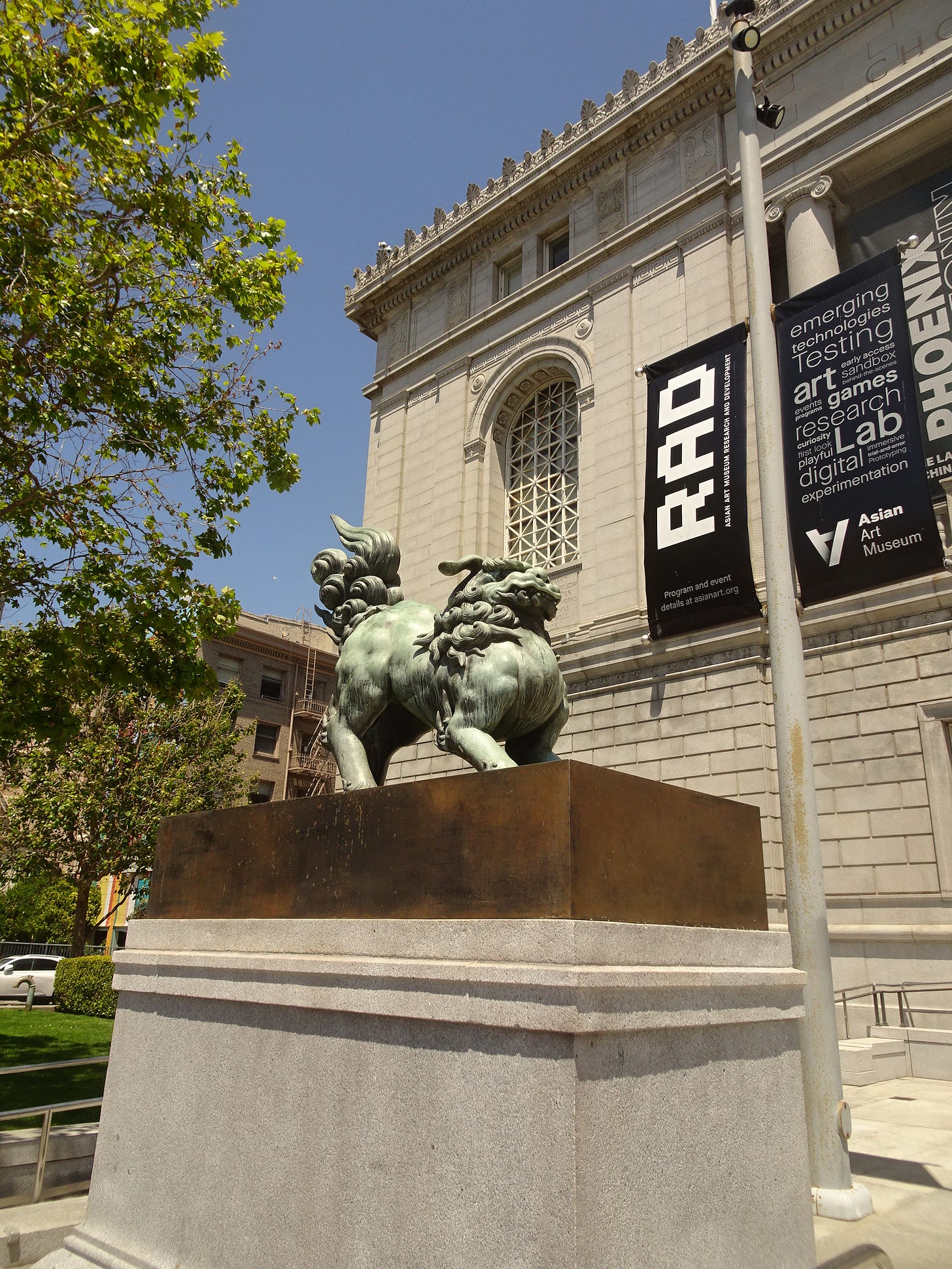
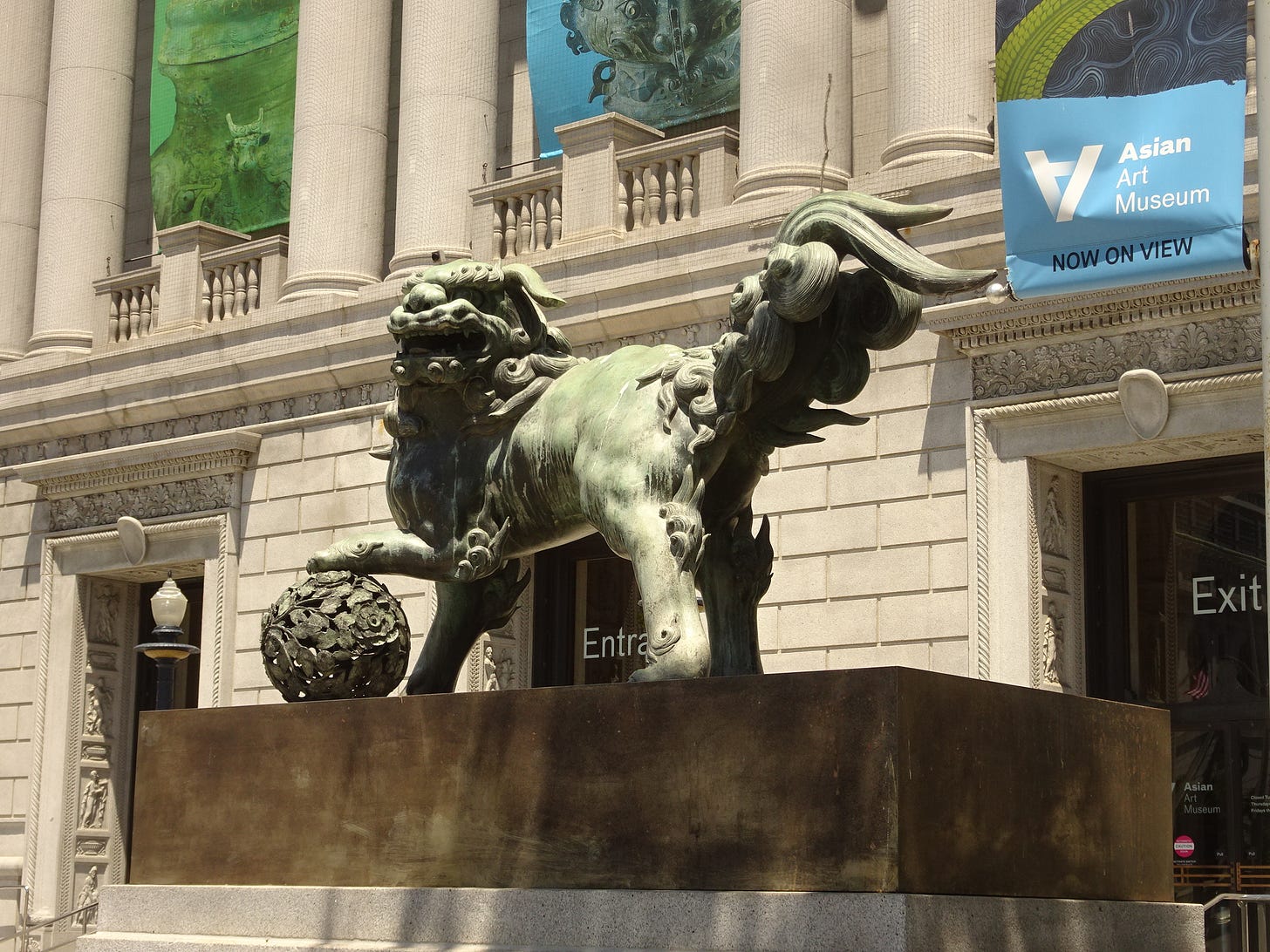
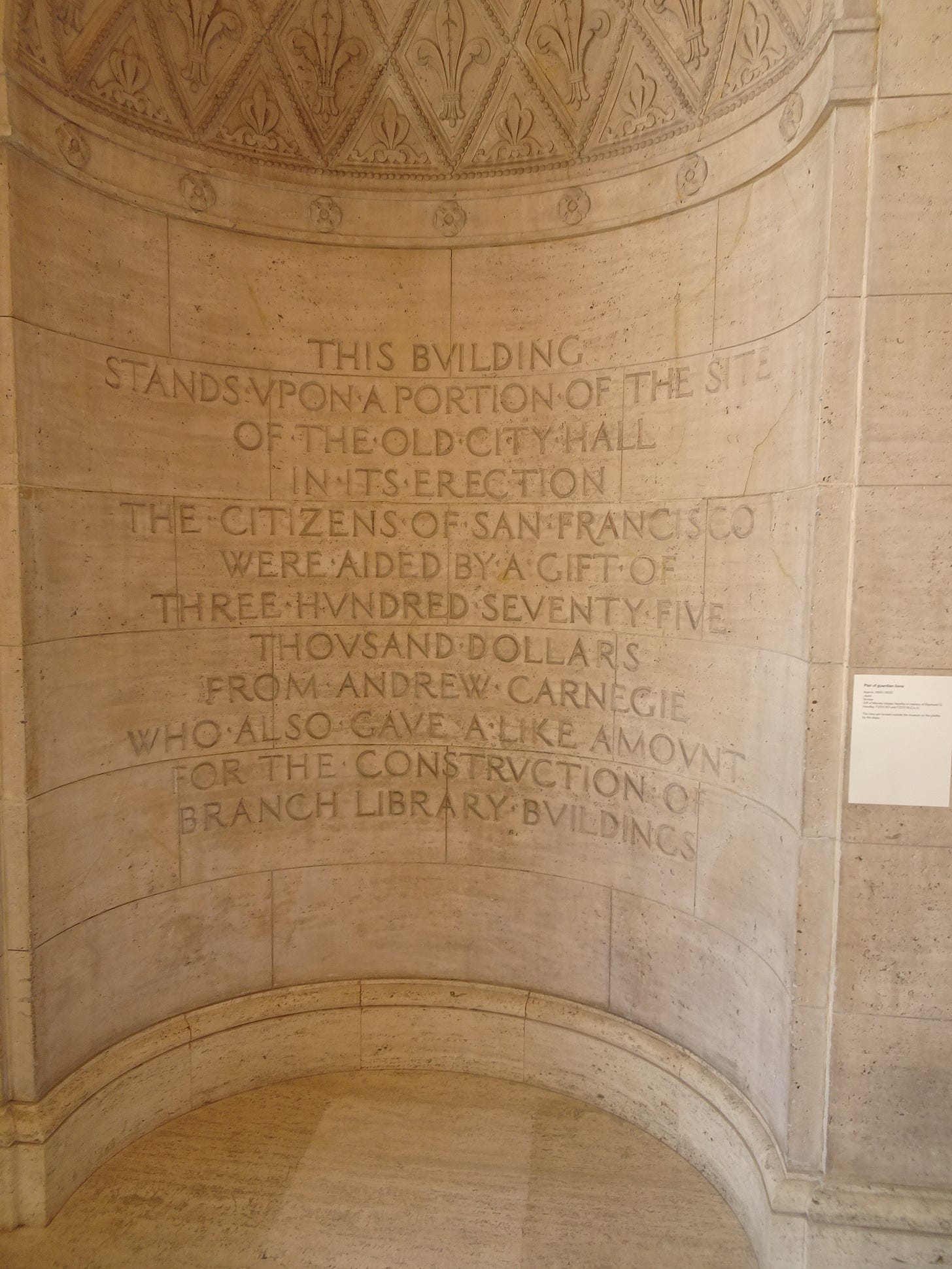
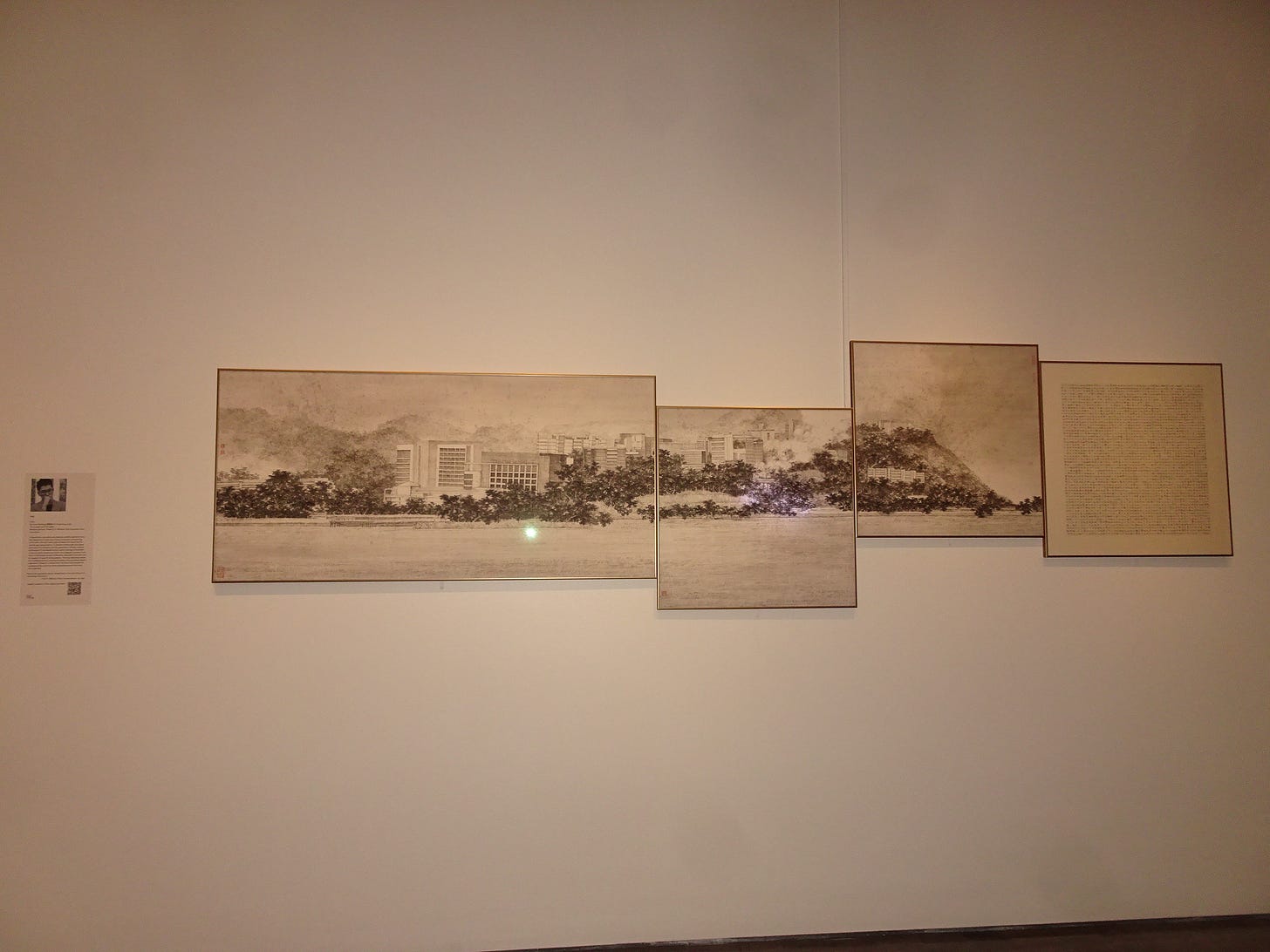

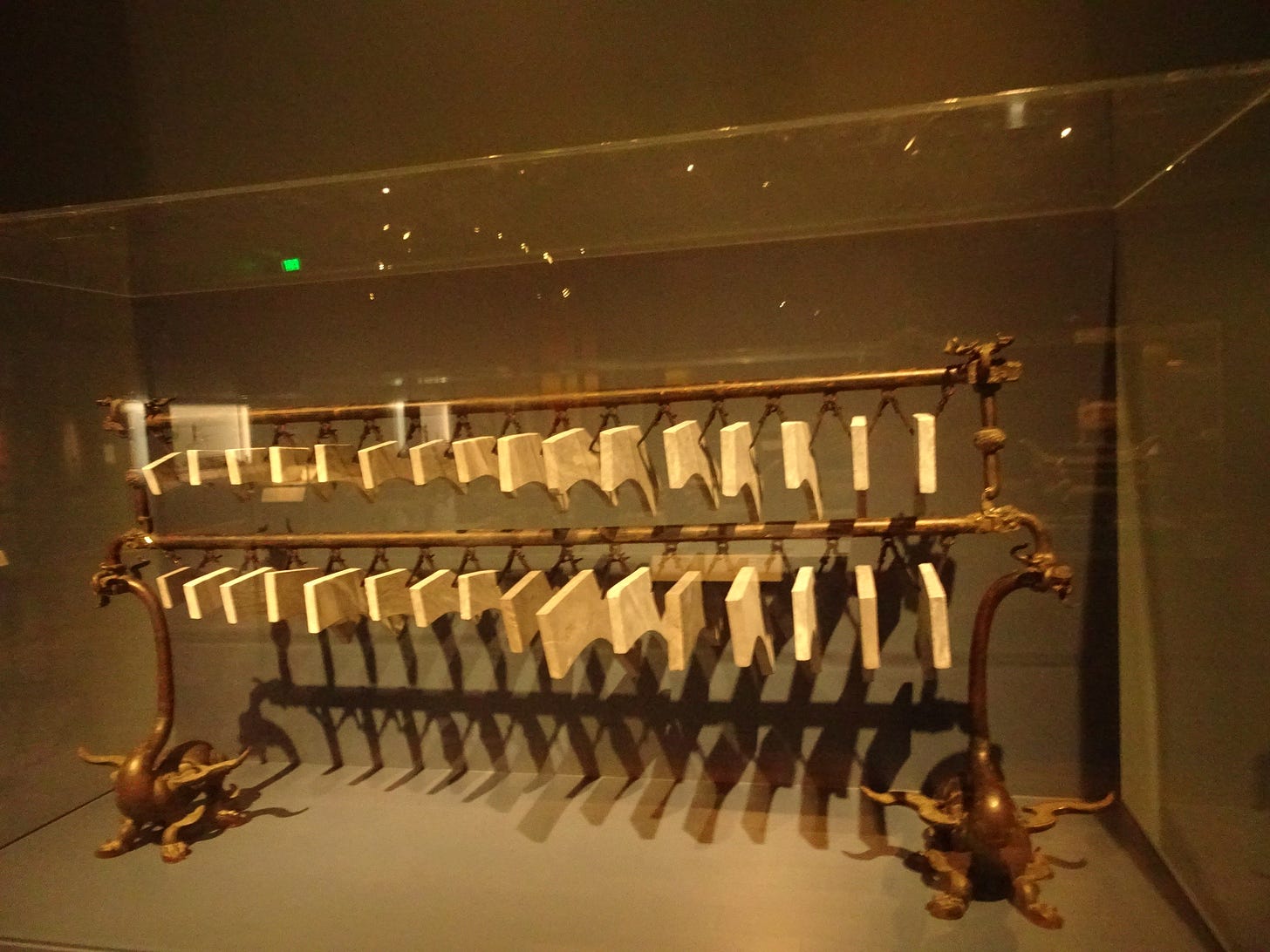
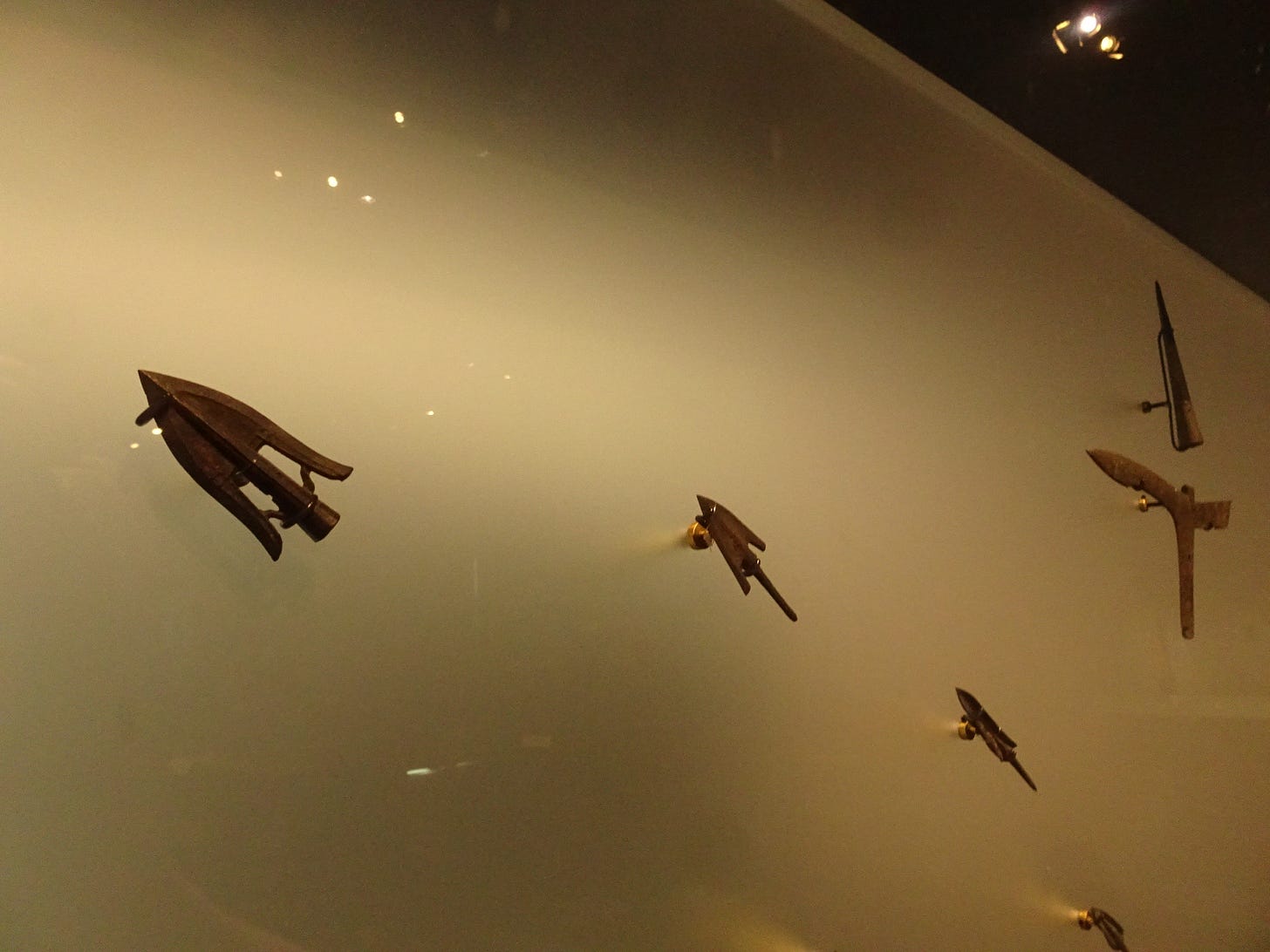
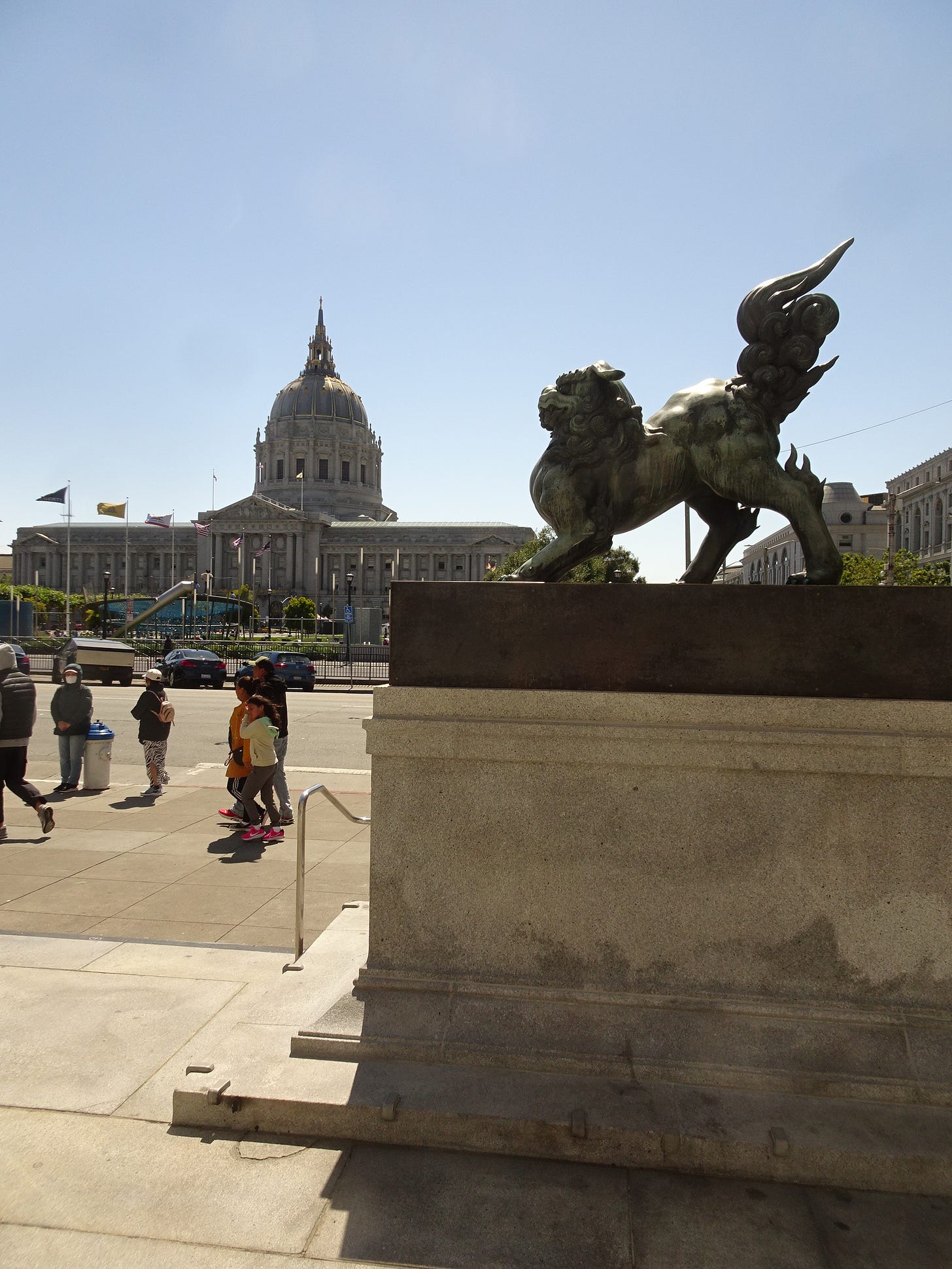
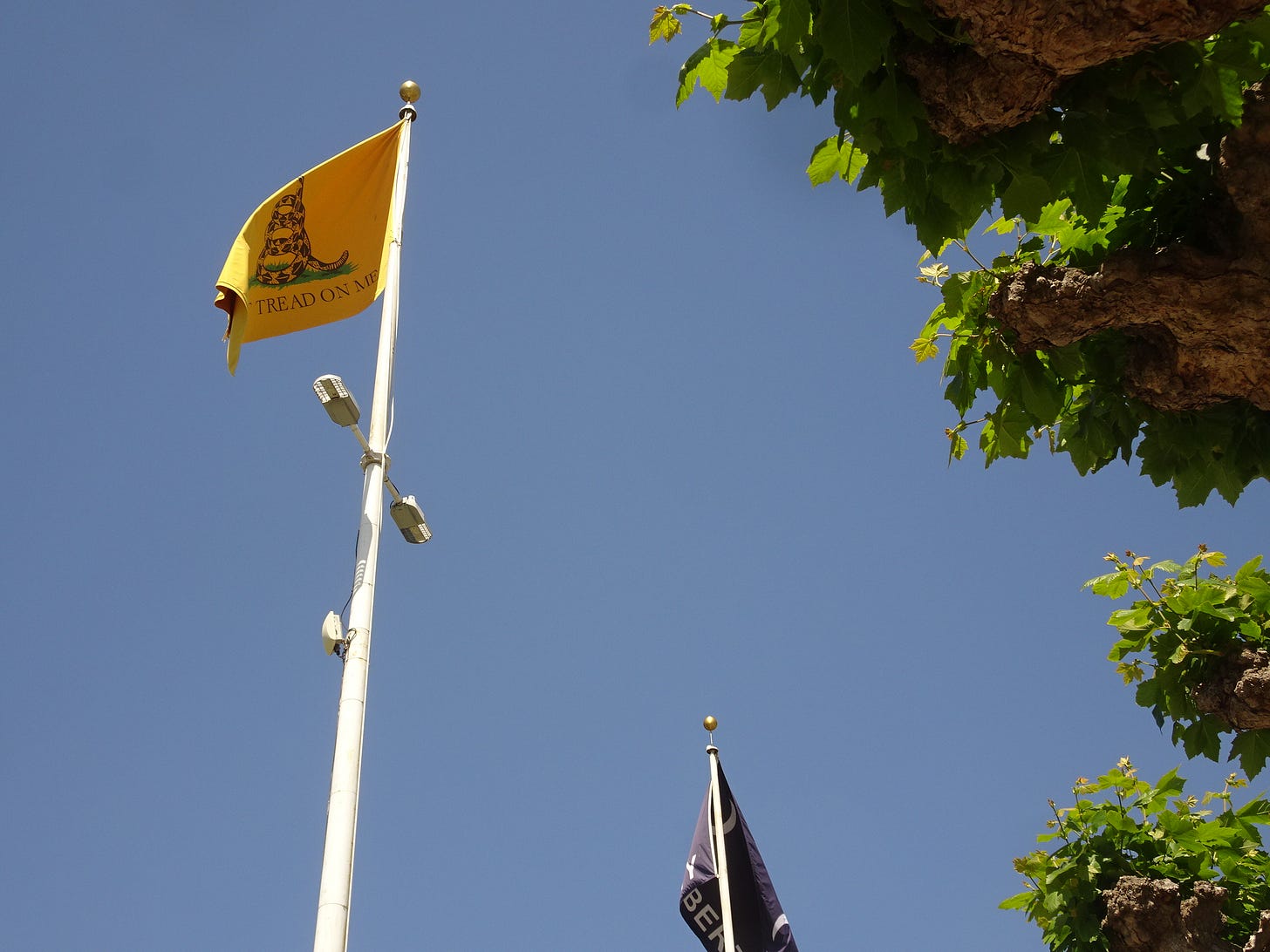
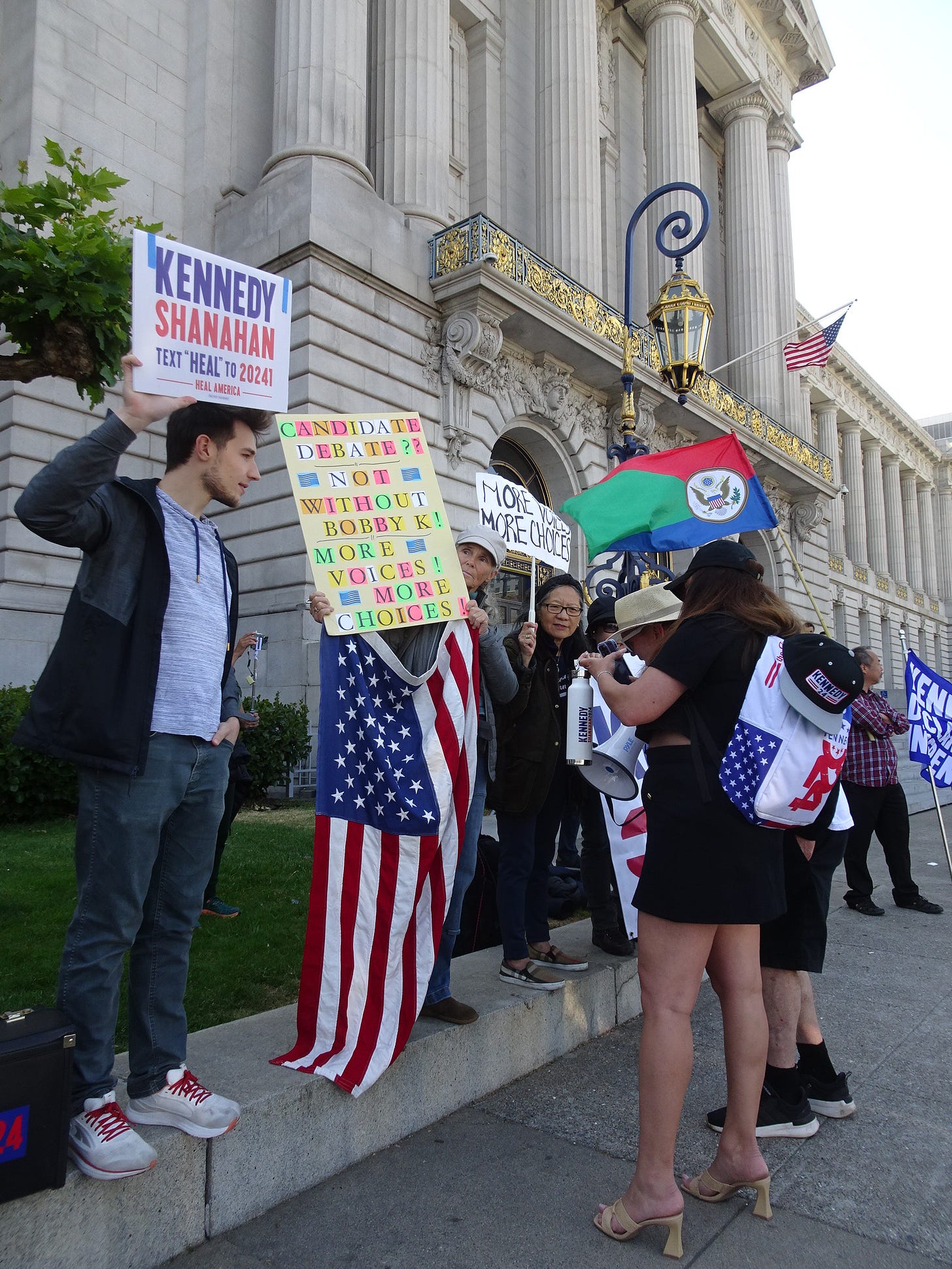

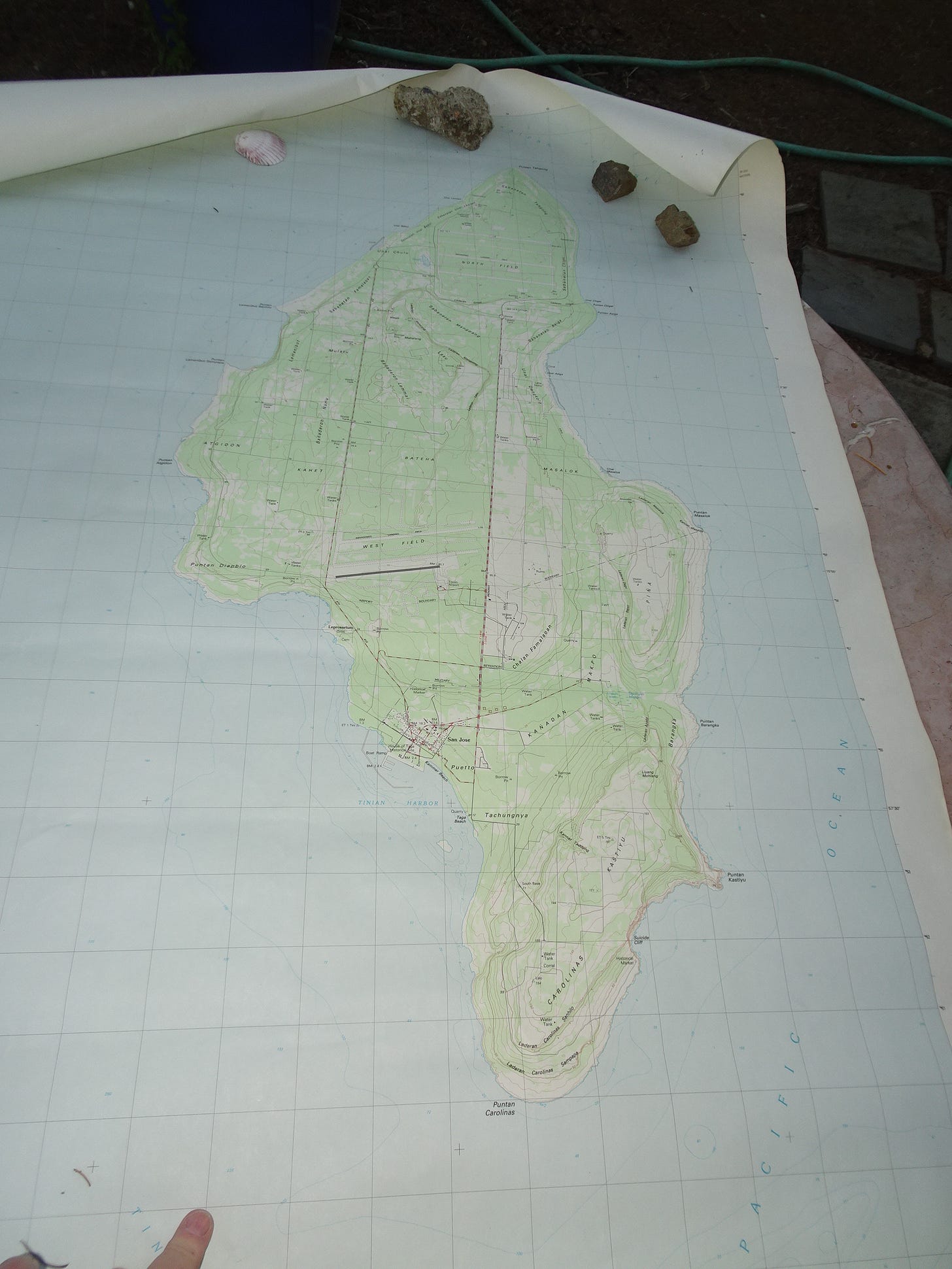
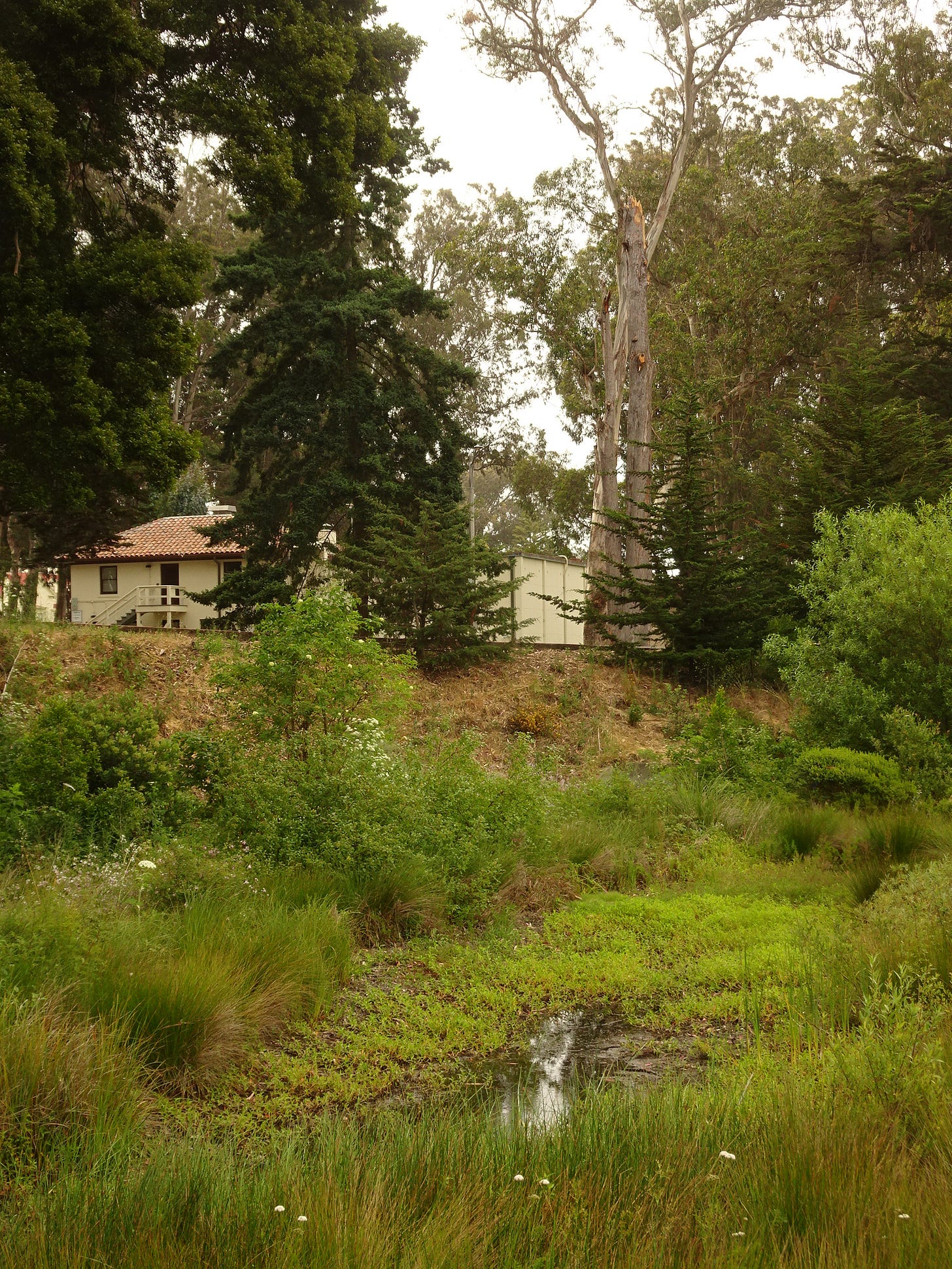
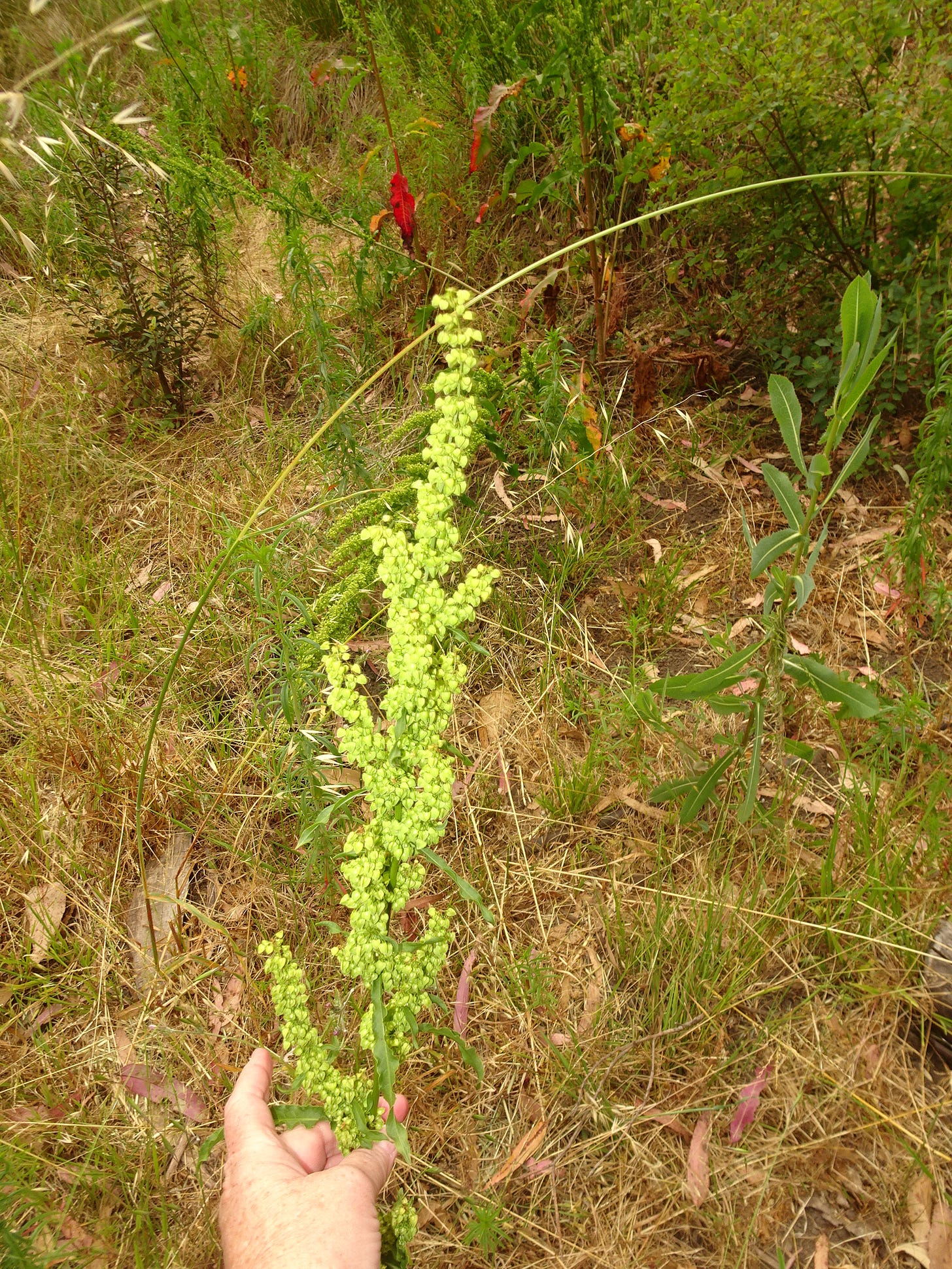
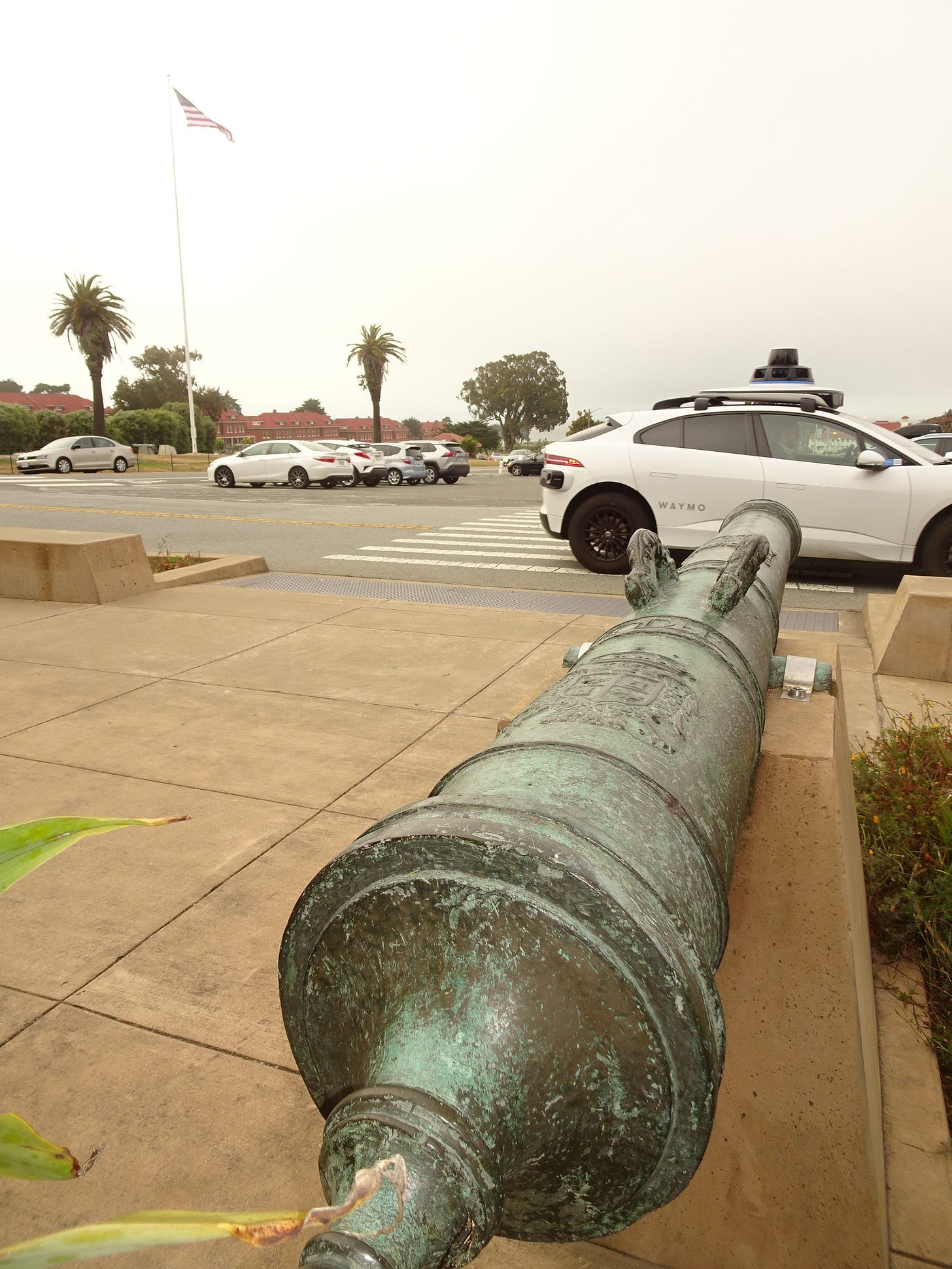
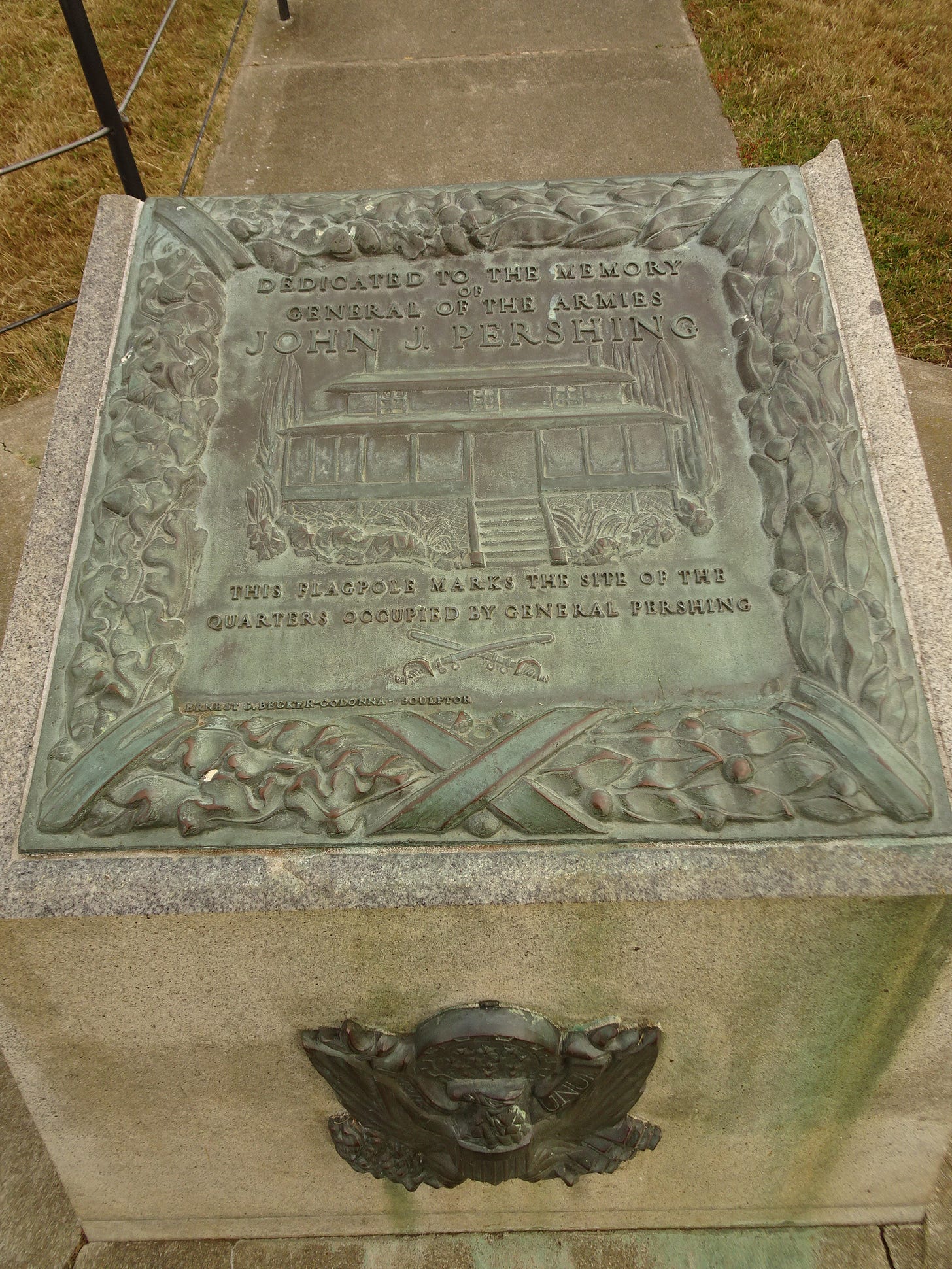
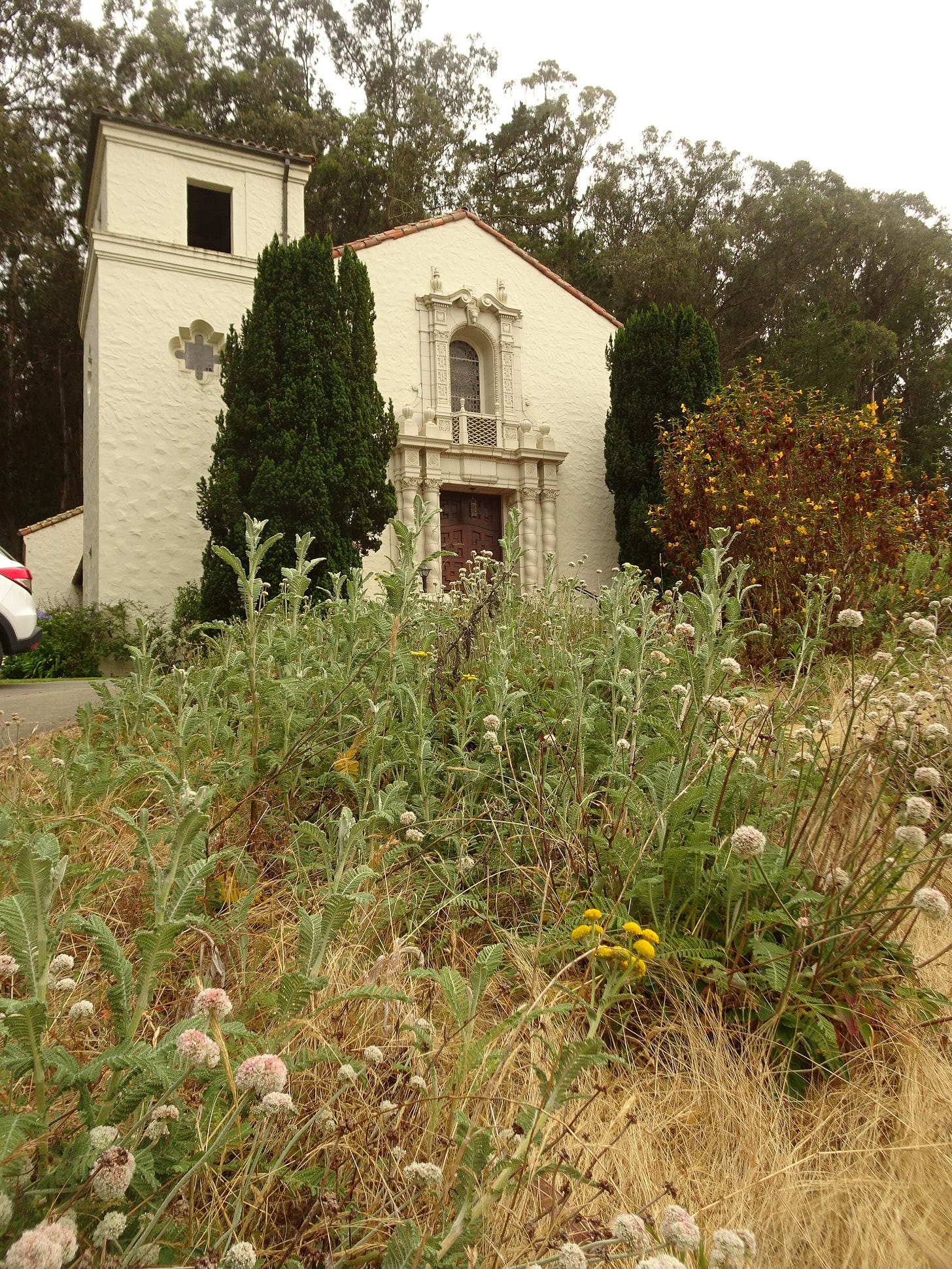
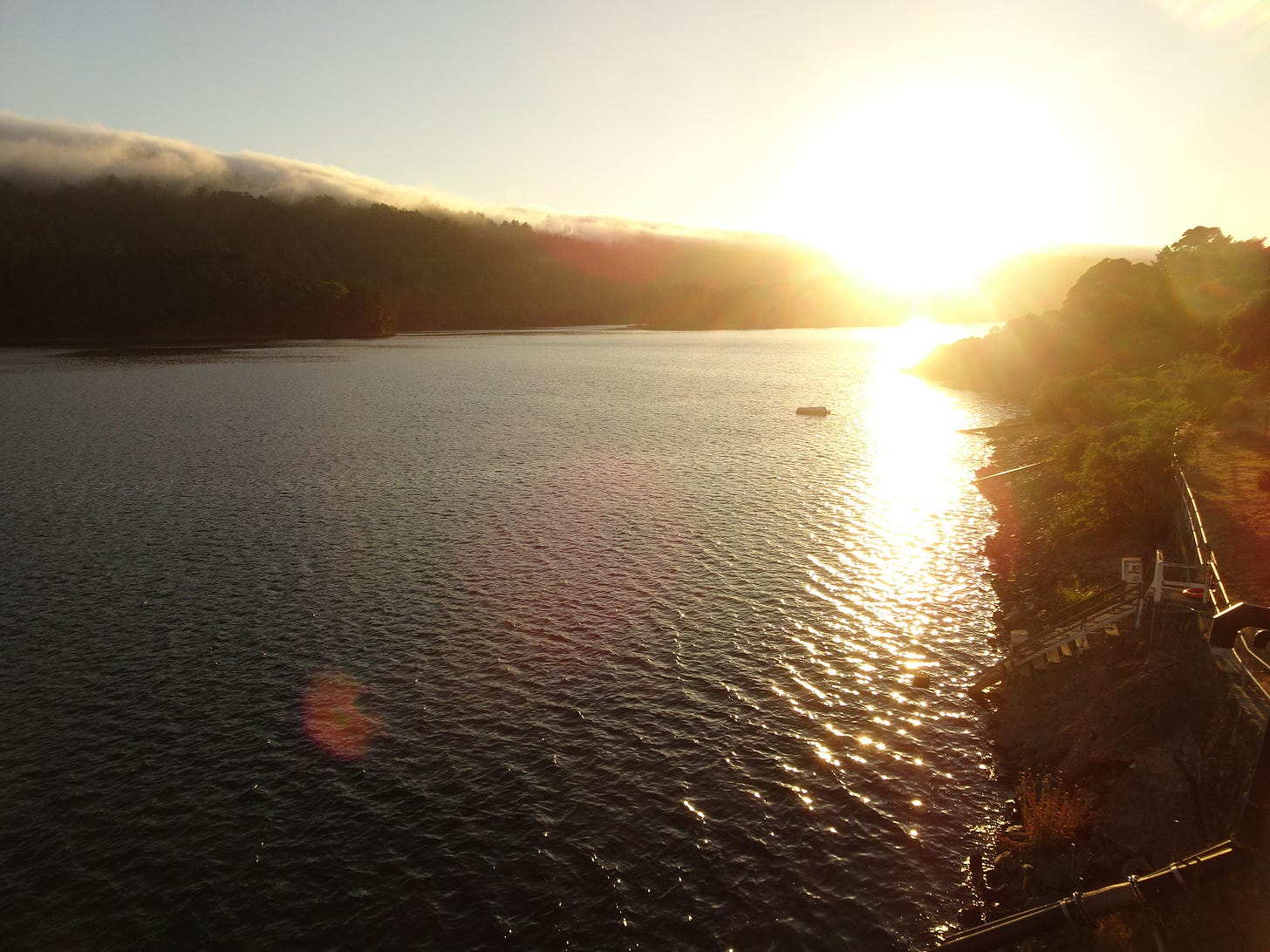
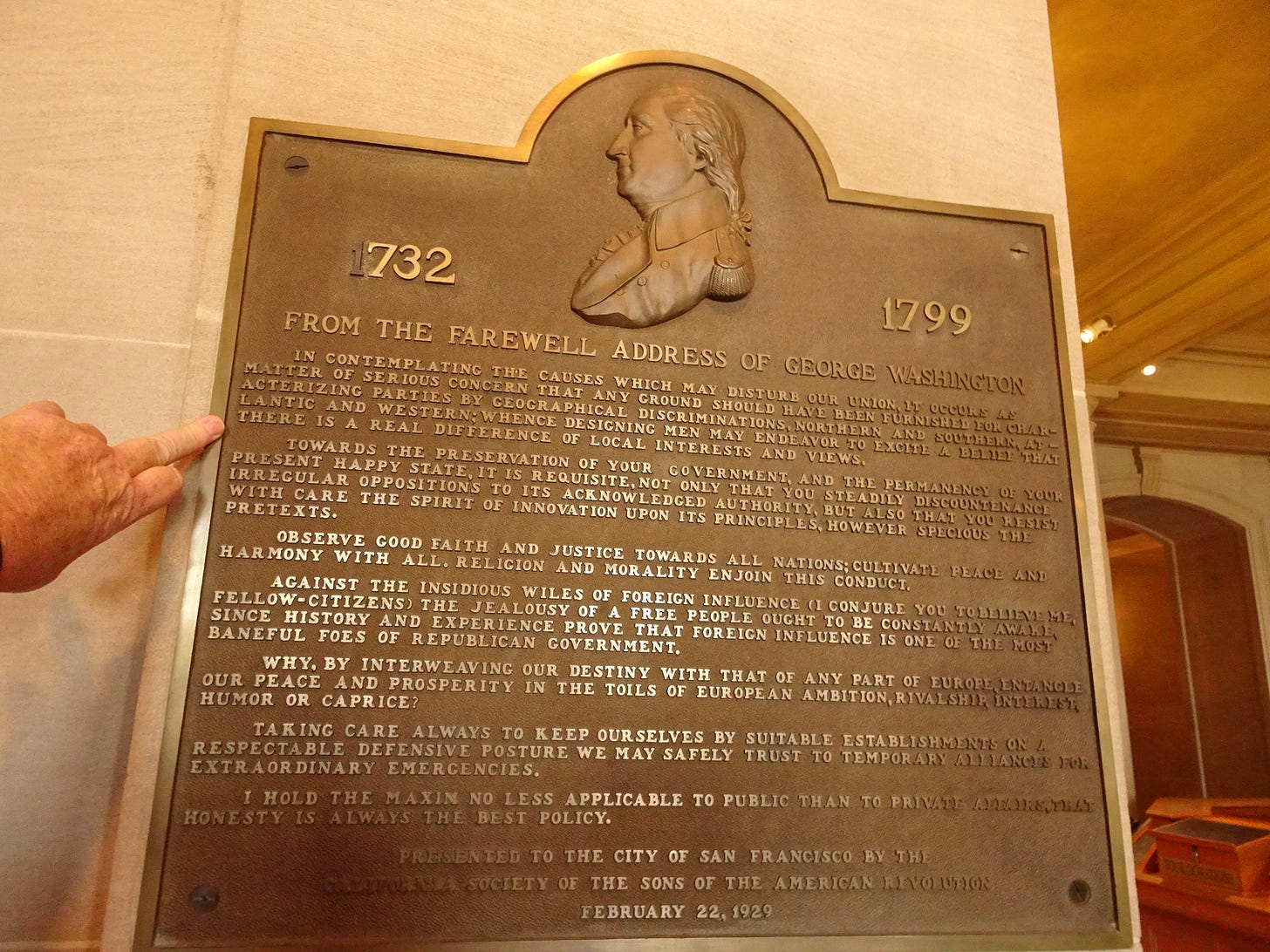
Wow, you had quite a day in SF! Such amazing detail. I'll let others know you were there...